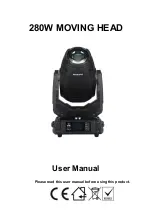Reviews:
No comments
Related manuals for Selection Multi Hip

Mondo
Brand: ACDC Pages: 4

M8CD
Brand: M-system Pages: 2

MD-BSW280
Brand: Rico Pages: 34

Smart Plus PHT-35LHS
Brand: Vatech Pages: 190

ULTRATHERM 908i
Brand: gbo Pages: 32

49009
Brand: Dantel Pages: 6

ECLIPSE
Brand: Zero 88 Pages: 22

Illuminator
Brand: Yaasa Pages: 20

TG77
Brand: Yamaha Pages: 139

TG77
Brand: Yamaha Pages: 19

01V96i
Brand: Yamaha Pages: 32

PWS
Brand: GE Pages: 18

CP-G7126
Brand: Fagor Pages: 92

AEMC 6417
Brand: Chauvin Arnoux Pages: 12

TB-6568
Brand: EMIT Pages: 6

VE-TTLHX32
Brand: impact Pages: 12

ProCarve
Brand: Otto Bock Pages: 20

LAVIGO DPS
Brand: Waldman Pages: 60

















